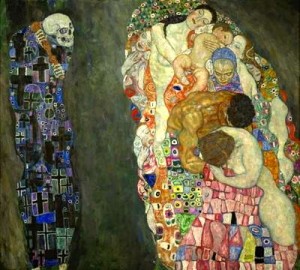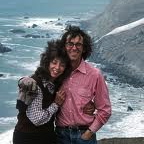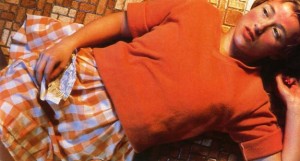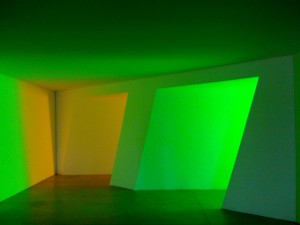Live from Vienna
All of Vienna is throwing a birthday party! It’s the 150th anniversary of the birth of Gustav Klimt, Austria’s most famous artist.
The walls of Vienna’s world class museums are ablaze with Klimt’s famous shimmering gold-leaf paintings. Windows of the shops, even of the grocery stores, glitter with his golden colors.
There is a party going on indeed!
But every party has a pooper…
In the early 1900s, many critics dismissed Klimt’s works as decorative and superficial…a painter of women of high society. Others condemned his nudes as obscene.
A deeper look into Klimt’s paintings shows a profound search for understanding life.
One hundred and fifty years ago Vienna was a hotbed of new ideas. Freud was beginning to explore the subconscious and sexuality. Gustav Mahler was charging through the boundaries of classical music, composing heart-stopping symphonies. Art deco architecture was all the rage throughout Europe.
The sensitive Klimt was greatly influenced by these revolutionary movements. Look closely at his painting, “Death and Life,” above.
Thrilling colorful images tumble down the right side of the canvas…flickering mosaic like images of maternal serenity, erotic and familial love, youth and age, joy and suffering. The figures appear to be dreaming.
Uh oh. Hovering on the left of the painting is Death, skull-faced and cloaked in dark robes. Not one of the colorful life figures is looking at Death. But Death is watching them.
Yes, this masterpiece is stunningly gorgeous. But simply decorative it is NOT!
We are drawn into these images. They become personal. Are our eyes closed? Are we truly aware of the fragility of life and all we hold dear?
Gustav Klimt lived life passionately and without social constraints. Never married, he reportedly fathered 14 children. Klimt died of a stroke in 1918 at age 55 during the height of his fame.
Happy Birthday, Gustav Klimt!
Remarkable video of Klimt’s masterpieces.
Click here if unable to view the video.
Another take on Klimt’s paintings!
Click here if unable to view the video.
“Love and Art”
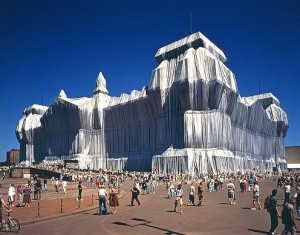
Artists: Christo and Jeanne-Claude
"Wrapped Reichstag" Berlin, 1995.
One million sq. ft. of shimmering aluminum-coated fabric tied with bright blue synthetic rope.
Their romance was meant to be. They were born on the same day, June 13, 1935. In their 20s they fell in love. She was born to well-to-do French parents. He was a penniless Bulgarian refugee. Her parents disapproved; they said he would never amount to anything. The couple moved to Paris where they fell in love again…this time with the environment and its beauty. Their life’s work in art began.
Christo (who goes by his last name only) and his wife, Jeanne-Claude (who goes by her first name only), believe that no one really owns our land, our waters, and our skies. They want to challenge us to see our world as art, and to see it differently.
The two artists try to show us that art doesn’t have to be permanent. Their projects are temporary. They cannot be bought or sold and nobody can sell tickets.
Christo and Jeanne-Claude accept no sponsors. All projects are completely financed by the sale of their project drawings, prints and scale models.
So how do the artists actually make their art?
Christo and Jeanne-Claude “gently disturb” the environment. They wrap famous landmark bridges and buildings in Europe with effervescent synthetic fabric. They surround small islands in Florida with floating fabric. They install thousands of huge blue and yellow umbrellas in the countryside of Japan and California. They design bright orange silk fabric gates for New York’s Central Park.
Millions of people come to see the things they see everyday. Ah, but now they are different. What was familiar is now changed. They are seen anew!
All projects are dismantled and completely taken down after two weeks.
Christo’s wife and artistic muse, Jeanne-Claude, died in 2009, of a brain aneurysm. But Christo believes her fearless creative spirit will always be with him.
Next project: “Over The River.” It’s a temporary work of art by Christo (and Jeanne-Claude) to suspend 6 miles of silvery, luminous fabric panels high above the Arkansas River along a 42-mile stretch of Southern Colorado.
Wow!
Captivating Video of Christo and Jeanne-Claude’s Art!
Click here if unable to view the video.
Afghan Girl, Photography
She was one of the world’s most famous faces, yet no one knew who she was. Her sea green eyes are filled with tragedy. They challenge us and we cannot look away.
She is called “the Afghan Mona Lisa.” And then she disappeared for two decades.
After searching the remote areas of Afghanistan for 17 years, “the Afghan Girl”, Sharbat Gula has been found.
Orphaned at 6 years old when Soviet bombs destroyed her village and killed her parents, Sharbat Gula’s grandmother led her and her siblings across a treacherous mountain range, begging for food and hiding in caves, eventually reaching a Pakistan refugee camp.
There, when she was 12 years old, Steve McCurry, National Geographic photographer, spontaneously took the photograph of the little refugee with the piercing green eyes.
This image became the most recognized photograph in the history of National Geographic magazine.
Now 30 years old, Sharbat Gula lives the traditional life of a veiled Muslim woman…but a Muslim woman living in poverty in a remote village. She can write her name but cannot read, was married at 15, has 3 daughters and her husband earns $1 a day as a bakers assistant.
Sharbat Gula has had her photograph taken twice in her life, once in 1985 and again in 2002 when McCurry and National Geographic “found” her. The men in her family gave their permission to capture her image unveiled, again for the cover of the magazine.
National Geographic sponsors The Afghan Children’s Fund for the education of Afghan youth.
Watch this fascinating video of the search for the Afghan Girl.
Click here if unable to view the video.
Cindy Sherman, Photographer
This photograph sold for the highest price in history…$3.9 million.
Cindy Sherman, the photographer, is a creative wild woman at the camera.
Using costumes, wigs, make-up and simple sets, Sherman invents a character. Then she poses in front of her own camera. No matter what Sherman’s disguise, the photo is ALWAYS a self-portrait.
Famous 15th century women from art history, clowns, Hollywood starlets and abused women have been her subjects.
In the photograph above, Sherman is dressed as a teenage girl on the verge of womanhood. This girl (Sherman) is lying supine on the kitchen floor clutching a torn classified ad. Is she dreaming of her traditional future of marriage and family? Or of a different kind of future?
It’s 1980. Women are demanding equality in the workplace. The second feminist movement is in full swing. This photograph marks a critical, tumultuous time in America.
Sherman’s most recent work explores the experience of women “of a certain age” struggling with today’s impossible standards of beauty in a youth-obsessed culture. (see video link below)
Cindy Sherman is not ridiculing these women. These photographs are self-portraits. She is one of us. She makes us examine the “masks” we wear and the roles we play.
Spectacular Video of Cindy Sherman’s Art.
Use this link if unable to view the video.
Art Oasis in Marfa, Texas!
In 1979, the phenomenally successful sculptor Donald Judd desperately wanted to escape glitzy and gallery-obsessed New York City, and go where “nobody knows you and nobody gives a damn.”
He found a place where nobody gave a damn…Marfa, Texas.
The tiny (pop. 2,000 souls) West Texas/Mexico border town is 200 miles from nowhere! Fly to El Paso and drive three hours and you’re there.
Judd bought dozens of abandoned buildings…among them an old US Cavalry base (later used by the U.S. Government as a camp, housing German POW of WWII), a defunct bank, an empty Safeway, 6 homes and the local hot springs. Judd wanted to use the spaces as they were…the good, the bad, and the ugly, to install his and other works of artists he admired.
Today, Judd’s sculptures and other artists’ world-class art pieces breathe life into the desert. Judd’s most famous installation is a series of 100 aluminum cubes, each one different from the other. Although they are housed in two of the abandoned POW barracks, they reflect the light of the desert streaming in through huge windows. After awhile one can’t tell which is the industrial material and which is nature. It is stunning.
A light installation by acclaimed artist Dan Flavin lines up tubes of bright florescent light overlapping complimentary colors, causing the optic nerve to literally shimmer.
John Chamberlian, who wrested rough magic from scrap metal of wrecked automobile parts, smashing and twisting together fenders, fins, bumpers and hoods, made history in sculpture. Ironically, what we might consider sculpture, glorious in color and form, was mistaken by garbage collectors for scrap metal and two pieces were towed away from outside a Chicago gallery warehouse in 1973.
Visitors are encouraged to get close to the art…and to get close to the spaces AROUND the art. Some even take their morning run through the art.
But Marfa isn’t just a sleepy little art town. Marfa is a state of mind.
Art students, emerging artists, famous artists, movie stars, poets, filmmakers, and renowned architects, can all be seen either giving formal lectures or hanging out at Brooklyn abstract painter Jeff Elrod’s studio. Elrod’s funky studio serves as a clubhouse/crash pad for the artists and is the scene of outlandish plays, alternative rock band music and just plain acting out!
Just a few hotels…historic El Paisano (the movie Giant was filmed there) and El Cosmico (rent nightly your very own Airstream trailer!)
Food…this is a different country, where you can do doughnuts in the middle of town in your jeep, and then go and eat escargots with parsley and garlic butter, drink a $200 bottle of wine and watch an experimental play.
¡Vamos a Marfa!
Art in the Desert! Watch this remarkable video of Marfa, Texas.
Click here if unable to view the video.

